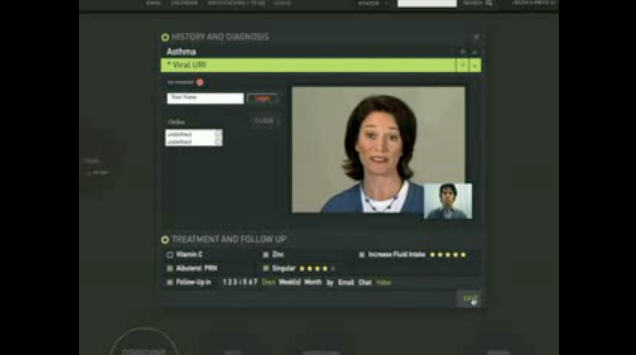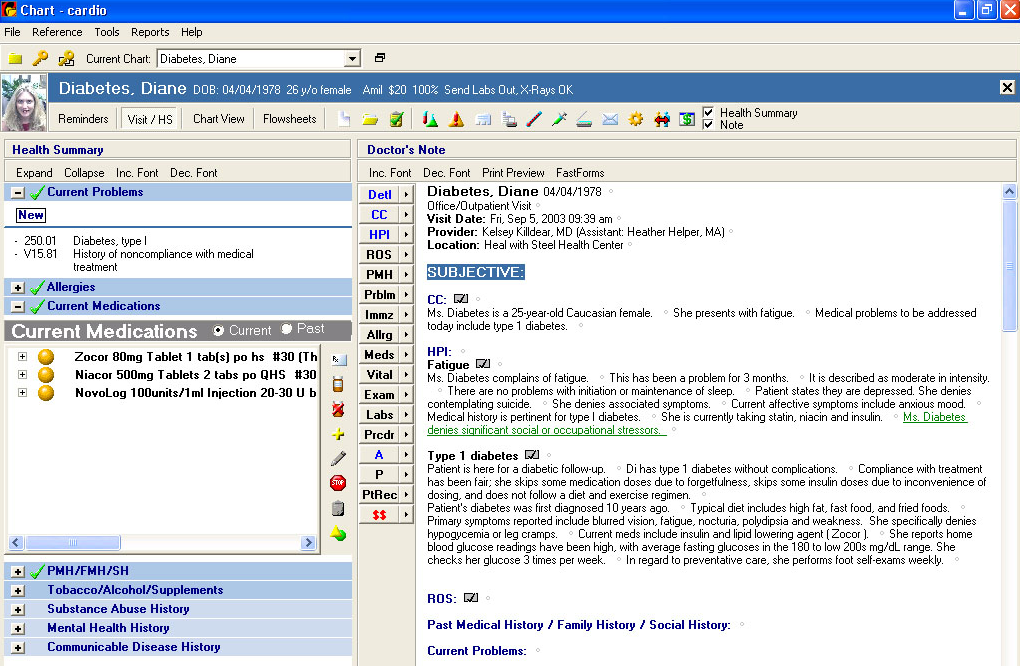
Image from 'Hello Health in Action.'
I've been back from New York a week and I'm still mesmorised by the story of Hello Health. Tamara Giltsoff, a service designer, introduced me to this wondrous new outfit who are making it easy again to see the doctor.
The Hello Health website tells the story better than I can, so I'll quote it direct: “Once upon a time, going to your doctor was simple. You knew his first name, or perhaps just called him ‘Doc.’ He lived just down the street and made house calls. And if you were sick, you would see him that day, because, well, you were sick. Then things started to change. Although medicine has made some amazing advances in keeping us healthy, we now have to contend with dietitians, insurance premiums, running shoes, deductibles, HMOs, OTC drugs, specialists, fat-free salad dressing, and therapists. Daunting, isn't it?"
The beauty of Hello Health is that the internet, and all things Web 2.0, are deployed to increase contact between patient and doctor. As Jay Parkinson, one of the doctors behind the service, explains, “I'm a housecall physician; I use the internet as a supplement to a primary visit.”
The service has been created principally for people who are working, but uninsured. It replaces the common experience in which one would go to a walk-in clinic and wait for three hours before seeing a doctor for five minutes. Often, one would never see that doctor again.
Hello Health combines the virtues of the old-fashioned neighbourhood doctor with new tech platforms. “We love technology, the Internet, and especially our iPhones,” says Parkinson; “You can talk to us like you're talking to a friend: through emails, texts, phone calls, instant messages, or face-to-face conversations.” It also helps that Hello Health doctors are close by, living and working in the neighborhood. To cap it all, Hello Health’s principal communication platform is a video on YouTube.

The Myca patient interface.
For years and years, top-down, doctor-centric, technology-focused projects have wasted scandalous amounts of money to achieve pretty much nothing. In the UK's National Health Service alone, billions of euros (the published figure is two, the likely total is 15 billion or much more) have been spent in endless attempts to centralise patient medical records. These projects failed because turf-wars between professionals and managers in different parts of the country remained unresolved, and because vast bloated systems were commissioned by technology-bewitched politicians from huge consulting firms.
A similar phenomenon persists in the America. Obama has said he will appropriate $20 billion dollars to the health care industry to encourage widespread adoption of electronic medical records. "While this sounds like a phenomenal idea, it’s not," says Parkinsion. “This is about as good an idea as throwing money at advancing the technology found in the Commodore 64.” His blog includes this clunky example of what Big Medicine currently asks doctors to use.

Example of the inerface used by Big Medicine, from Jay Parkinson's blog.
It's a ghastly sight compared to the Hello Health interface. Hello Health is like a sunny spring morning after the long dark winter of official attempts to reform health systems. But the root cause of these colossal failures was that the special interest groups who owned the projects neither knew nor cared about the quality of relationships between doctors and patients. In Hello Health, so far as one can see, the quality of that relationship is the main motivator of the people involved.
There remain some legal issues to be resolved to do with online diagnoses. But as an example of social innovation in practice, the whole thing is inspiring.
This essay was originally published on Doors of Perception, May 8, 2009.

